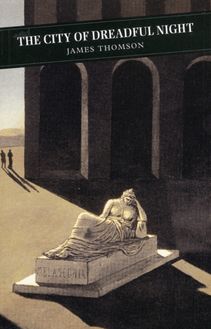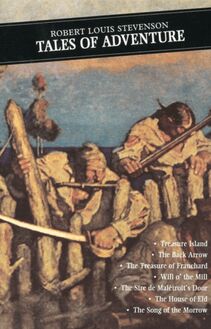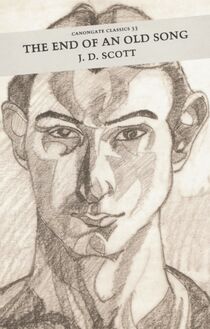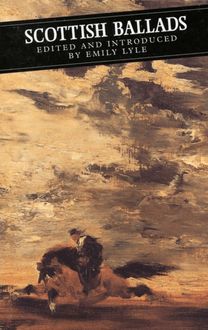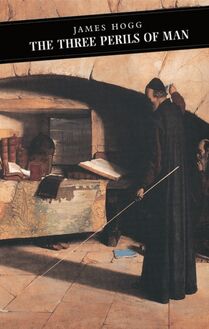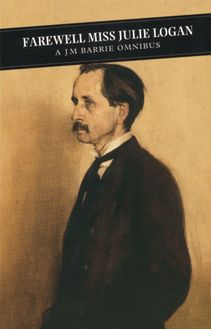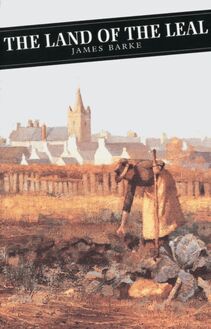Open The Door! , livre ebook
241
pages
English
Ebooks
2010
Vous pourrez modifier la taille du texte de cet ouvrage
Obtenez un accès à la bibliothèque pour le consulter en ligne En savoir plus
Découvre YouScribe et accède à tout notre catalogue !
Découvre YouScribe et accède à tout notre catalogue !
241
pages
English
Ebooks
2010
Vous pourrez modifier la taille du texte de cet ouvrage
Obtenez un accès à la bibliothèque pour le consulter en ligne En savoir plus
Publié par
Date de parution
01 juillet 2010
Nombre de lectures
1
EAN13
9781847675088
Langue
English
Catherine Carswell
OPEN THE DOOR!
Introduced by John Carswell
Contents
Title Page Introduction Book I: … Open The Door And Flee Chapter One Chapter Two Chapter Three Chapter Four Chapter Five Chapter Six Chapter Seven Book II: Open A Door Of Utterance Chapter One Chapter Two Chapter Three Chapter Four Chapter Five Book III: … Behold, I Make All Things New Chapter One Chapter Two Chapter Three Chapter Four Chapter Five About the Author Copyright
Introduction
Although the latter part of Open The Door! is mainly set in London, and the clue to the book is an episode in Italy, the roots of the novel are in, and belong to, Glasgow.
One must think of those Victorian terraces and the monumental centre of the city as fairly new, offering a sense of enterprise and confidence in the middle of danger and poverty. It was an energetic city, with its waterways and its shipping, its chemical plants and its neighbouring hills and moors, its dramatic new Gothic university building beside the crevasse of the Kelvin. Gilbert Murray became Professor of Greek there just ten years after Catherine Macfarlane was born in 1879. He was twenty-three. It was one sign among many that Glasgow was on its way to becoming a cultural as well as a commercial metropolis. Soon its School of Art would burgeon under Charles Rennie Mackintosh. All her life Catherine felt herself to be "a citizen of no mean city".
At one level, no doubt, the title of her novel suggests an escape from the world in which the author grew up – a world of Calvinist religiosity, oppressive conventions and smothering family life. She describes them, and her resistance to them vividly: but lovingly and with sympathy. Much of Victorian Glasgow is repudiated in the book, just as it was in her later life, but never with hatred. The clue to the title has much more to do with entering than with escape, and the "door" is "the little sunken door in the wall" which Joanna, the subject of the novel, sees in Italy and is told admitted a lover to the house of the Renaissance courtesan "La Porziuncola".
Most novelists, if they decide on an attractive heroine, either describe her attractiveness or arrange that it shall be taken for granted. An unusual thing in Open The Door! is the heroine’s own knowledge of her attractiveness, mingled with senses of power, risk, guilt, misery, fear of failure, pleasure in success, and a measure of mischief: all set against the austere, deeply imprinted consciousness of the family life created by the Free Church of Scotland.
Open The Door! was a first and a mind-clearing book drawn from direct experience. Joanna’s family – especially her elder sister and her lovable but infuriating mother – are taken from life. So is Phemie, the baby-draper’s daughter, whose original, after many adventures, paired off with one of the author’s brothers. Joanna’s lover Louis is modelled on the painter Maurice Greiffenhagen, and Lawrence Urquhart, with whom the book ends, reflects my father Donald Carswell, whom Catherine married in 1915. Even the relative ages of the principal characters are preserved from their originals in real life.
But to what extent was Joanna Catherine? for this one must look at Catherine’s life and the genesis of the novel.
Catherine was the second of the four children of George and Mary Anne Macfarlane, God-fearing Free Church middle-class Glaswegians: both her grandfathers had been ministers who sacrificed their livings in 1843 and "came out" to form the Free Church rather than accept patronage and "intrusion". Though she was converted to socialism by reading Blatchford at the age of seventeen, and later espoused many left-wing causes, she could never quite abandon the idea that "underneath were the everlasting arms" or bear the depreciation of private charity.
Some of the most lively parts of the novel describe Catherine’s family life with her elder sister and two younger brothers, and in many ways the "hens of gold", as they loved being called by their mother, were surprisingly free. As the most talented of the four she was the only one to attend a university – Glasgow of course – and she read English and was a star pupil from the first, though in those days she could not be admitted to a degree. Before that she spent two years at the Frankfurt Conservatorium and became a respectable pianist. Her mother’s side of the family had relations in Italy, and there too Catherine spent some time. The Aunt Perdy of the book is not a fiction. But the engineer Rasponi, Joanna’s first husband, is an almost complete invention substituted for Catherine’s first, and disastrous, marriage.
In September 1904, when she was twenty-five, she met a man called Herbert Jackson while she was staying with her Glasgow professor, Walter Raleigh, at Farnham in Surrey. Herbert Jackson was Mrs Raleigh’s brother, and some ten years older than Catherine. He had fought in the South African War and his occupation was now that of an artist. There was a whirlwind courtship, and they were married that October. Whether the Raleighs could have prevented the marriage, one cannot know. Certainly they were placed in an appalling situation, for they knew that for some time past Herbert Jackson had shown clear signs of mental instability. He had causelessly assaulted people, issued challenges to duels and complained of imagined slights and persecutions, though most of the time he seemed normal enough. They kept their counsel. Perhaps they hoped marriage would steady him.
In this they were quite mistaken, for the key to his paranoia was a delusion (and delusion it was) that he was impotent, and the consequent conflict imposed by the need to abandon his delusion produced not an amelioration but a crisis which grew rapidly worse. From claims that he was being watched and spied upon he moved to accusations that Catherine was secretly betraying him. In March 1905, when she was pregnant, he swore the child could not be his and its father was probably the Prince of Wales. A few days later he produced a revolver, which she took from him and threw out of the window. He was taken to a mental hospital, where he remained under a certificate, too dangerous to be discharged, for the rest of his life. He would see neither his wife nor his daughter Diana, who was born in October 1905.
Catherine returned to Glasgow to live with her mother, and was received with a mixture of sympathy and reservation. Her husband was thirty-six, and as the law stood there seemed no way she could avoid being married to him for the rest of his life.
Soon after coming back to Glasgow she started on her writing career as dramatic critic and fiction reviewer for the Glasgow Herald . This renewed her contact with Donald Carswell – the Lawrence Urquhart of the novel – whom she had known when they were studying together at the university, and who was now a sub-editor on the Herald . The Louis of the novel had come to Glasgow about the time of Catherine’s return. This was Maurice Greiffenhagen, who became Professor of the life Class at the Glasgow School of Art – then at the height of its fame – in 1906. Greiffenhagen was already a well-known artist who went on to be an academician and, in his time, a fashionable portrait painter. He had painted what is perhaps the picture by which he is best remembered as long ago as 1891, when he was thirty. This was "An Idyll" which shows a brawny shepherd enthusiastically embracing a reluctant but not wholly unwilling shepherdess in the woodland setting. It hangs today in the Walker Art Galley, and must have been a rather bold purchase at the time. D. H. Lawrence, then teaching at Croydon and still an unknown schoolmaster, saw it in 1908 and was so impressed that he made copies of it and wrote to one of his friends: "As for Greiffenhagen’s ‘Idyll’ it has moved me as much as if I were fallen in love myself." Later events in Catherine’s life add a strange poignancy to this coincidence.
Greiffenhagen was forty-four when he met Catherine, and she fell lastingly in love with him. He was married, with a family, and seventeen years older.
At that time, deeply committed to Greiffenhagen, Catherine embarked on what most people must have thought was a hopeless attempt to free herself from her own marriage. She could not divorce Jackson, as the law then stood; and he, being certified insane, could not divorce her. Her unprecedented case was that because of his developing mental illness he could not have fully grasped what he was undertaking when they were married, and so the marriage was null and void.
Jackson v Jackson came to court in May 1908 and lasted six days, during which Catherine gave evidence about her extraordinary honeymoon, facing strict cross-examination. Several doctors were called, one of whom, challenged on the point that he had examined Herbert Jackson only after the marriage, compared the forest tree he had seen in the disease with the sapling that must have preceded it. It was powerfully urged on Jackson’s side that a nullity would make the child illegitimate, which no court should allow – least of all on the request of the mother. Jackson himself, his counsel said, was too ill to appear. "The respondent," said Mr Justice Bargrave Deane, "was not at the time of the marriage a raving lunatic: outwardly to people he was competent. The question is, whether he was really insane." It was for her to prove it, and he found that she had, so establishing a leading case.
Three years later, in 1911, she received D. H. Lawrence’s first novel, The White Peacock , in her pile for the Herald , and declared that she found in it "a new voice". Soon afterwards, on the death of her mother, she moved to London (where Greiffenhagen was now living) and established herself in a cottage in Hampstead with Diana. The dramatic criticism for the Herald naturally had to stop, but she continued to review their fiction e
